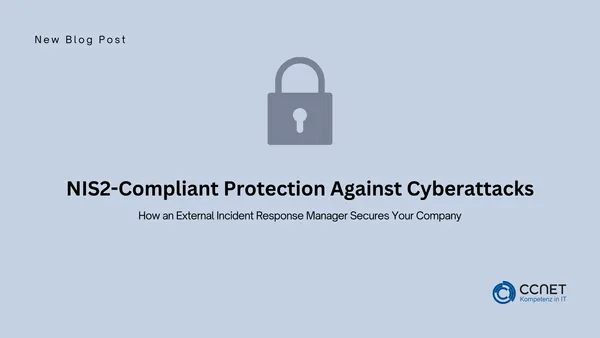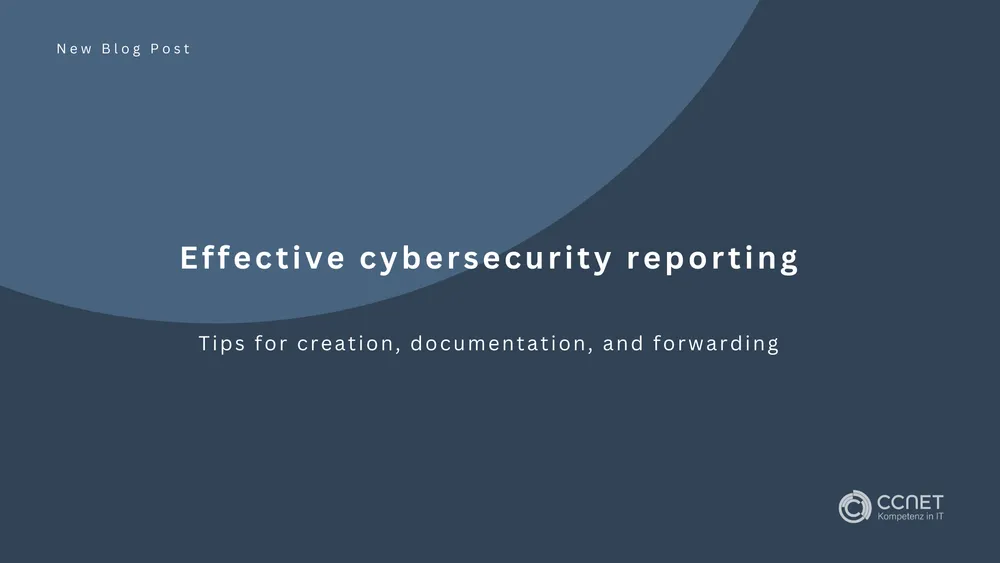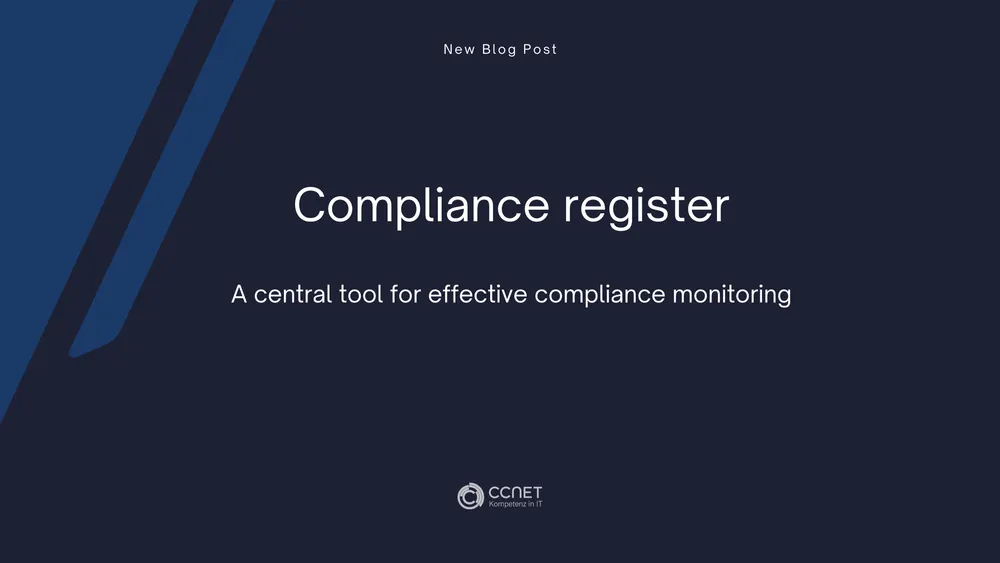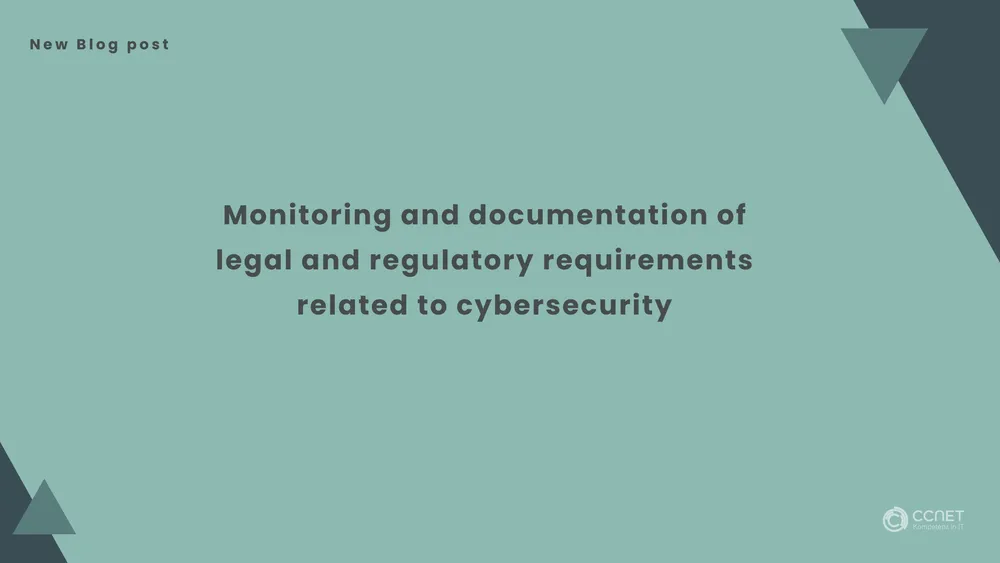
CCNet
Dec 13, 2024 • 3 min read

NIS2-Compliant Protection Against Cyberattacks: How an External Incident Response Manager Secures Your Company
The requirements of the NIS2 Directive demand that companies not only protect their IT infrastructure but are also prepared to respond quickly and effectively to cyberattacks and security incidents. An external Incident Response Manager provides exactly this support – flexible, specialized, and cost-efficient. But how can this service concretely help to protect your company from growing cyber threats?
What You Need: Fast and Effective Response to Cyber Incidents
Companies in critical infrastructure sectors like energy, transportation, or healthcare must be prepared for cyber incidents. However, many lack the internal resources to establish comprehensive incident management. An external Incident Response Manager offers a tailored solution that ensures your company meets legal requirements and responds quickly to cyber incidents.
But how does this work in practice?
How to Implement It: The Role of the External Incident Response Manager
The external Incident Response Manager handles the complete management of security incidents – from preparation and detection to response and recovery. This service not only ensures compliance with the NIS2 Directive but also provides you with the flexibility to react quickly and effectively to threats without having to fill a full-time position.
1. Proactive Planning and Incident Prevention: Being Prepared is Everything
The first step in effective incident management is proactive planning. The external Incident Response Manager develops a customized Incident Response Plan that takes into account the specific requirements of your company and the NIS2 Directive.
- Solution: The Incident Response Manager creates detailed plans with clearly defined roles and responsibilities. Regular vulnerability analyses and the implementation of monitoring systems ensure that potential threats are detected and prevented in advance.
2. Detection and Analysis of Security Incidents: Quick Action is Crucial
In the event of a cyberattack, the external Incident Response Manager monitors your systems in real-time. Using advanced tools, they analyze suspicious activities and security gaps to quickly take appropriate countermeasures.
- Solution: Through continuous monitoring with modern technologies, the Incident Response Manager immediately detects security incidents and can report and analyze them according to the NIS2 Directive. Immediate action minimizes potential damage and protects your company’s resources.
3. Coordination of Incident Response: Immediate Action to Contain Damage
Once an incident is identified, the Incident Response Manager takes over the coordination of the response. This includes isolating affected systems and containing the threat to restore business operations as quickly as possible.
- Solution: The Incident Response Manager works closely with internal IT teams and external partners to coordinate all necessary steps to contain the damage and restore systems. Quick decision-making minimizes downtime, and normal business operations can resume promptly.
4. Recovery and Damage Mitigation: Quickly Restoring Business Operations
After a security incident, it is critical to restore affected systems and data. The external Incident Response Manager is responsible for restoring operations and implementing strategies for damage mitigation.
- Solution: With clear recovery plans (Disaster Recovery), the Incident Response Manager ensures that all affected systems are brought back online quickly. This minimizes the impact on business operations and reduces the potential follow-up costs of an attack.
5. Reporting and Documentation: Everything Documented in Compliance with NIS2
A key component of the NIS2 Directive is the accurate documentation of all security incidents. The Incident Response Manager creates detailed reports on the incident, which are submitted to management and regulatory authorities.
- Solution: These reports include a full analysis of the incident, the measures taken, and recommendations for preventing future incidents. This helps your company demonstrate compliance with the NIS2 Directive and minimize future risks.
6. Post-Incident Analysis and Lessons Learned: Continuous Improvement of Your Security Strategy
After each incident, the Incident Response Manager conducts a comprehensive post-incident analysis to understand the causes and improve the security strategy.
- Solution: Based on insights from the incident analysis, the Incident Response Plans are continuously adjusted and optimized. This strengthens your company’s resilience against future attacks and further develops your security strategy.
Training and Awareness: Cybersecurity Begins with Employees
The Incident Response Manager trains your employees to ensure that everyone is prepared for cyberattacks. Regular training and awareness programs help improve the team’s response capability and minimize human error.
- Solution: Tailored training sessions strengthen security awareness within the company. Your employees will know exactly how to act in the event of an attack and actively contribute to the company’s security.
Support with Audits and Compliance: Always on the Safe Side
The external Incident Response Manager not only helps your company manage incidents but also supports you in audit preparation and ensuring compliance with the NIS2 Directive.
- Solution: All incidents and actions are thoroughly documented, allowing you to prove at any time that your processes meet legal requirements. The Incident Response Manager also advises on optimizing your security protocols to ensure that you always operate in compliance.
Conclusion: Flexibility and Expertise for Comprehensive Protection
An external Incident Response Manager offers the ideal combination of flexible and cost-efficient support in incident management. With this solution, you can ensure that your company is prepared for security incidents and responds quickly and professionally in the event of an emergency.
Through continuous monitoring, rapid response capabilities, and comprehensive documentation, the Incident Response Manager secures that your company is always NIS2-compliant and protected against growing cyber threats. Take advantage of this scalable and flexible solution to strengthen your cybersecurity and maximize the protection of your IT infrastructure.


